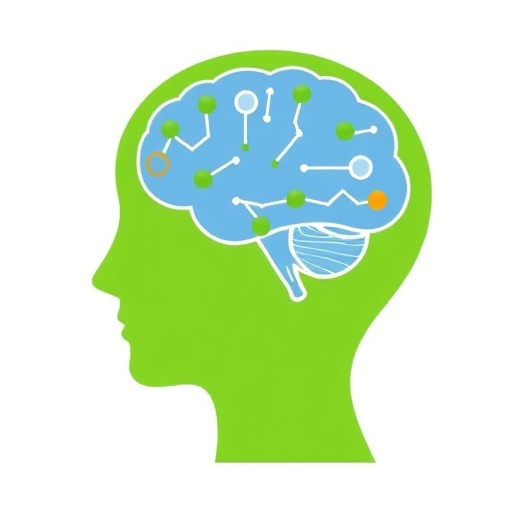Recent advancements in neuroscience have significantly enhanced our understanding of traumatic brain injuries (TBIs). However, despite these advancements, the complexities involved in accurately assessing individuals with TBIs remain a profound challenge. In their recent publication, Brennan and Teasdale delve into the multitude of intricacies that arise when attempting to merge diverse forms of data in order to provide an informed evaluation of TBI patients. Their insights are crucial for improving clinical outcomes and tailoring rehabilitation to the specific needs of individuals suffering from TBIs.
Combining multimodal data involves integrating information from various sources, including neuroimaging techniques, neuropsychological assessments, and physiological data. Each type of data provides unique insights, but the challenge lies in effectively synthesizing this information into a cohesive understanding of the patient’s condition. The authors highlight that while neuroimaging can provide a visual representation of physical changes in the brain, neuropsychological assessments are essential for understanding the cognitive and emotional aspects of injury. This interplay between the physical and psychological dimensions is critical for accurate diagnosis and treatment.
The variability in TBI presentations further complicates the assessment process. No two injuries are alike; the mechanisms of injury, the severity of the trauma, and individual patient factors all play a role in determining the effects of a TBI. As a result, the data collected must be interpreted with caution. The authors emphasize that a one-size-fits-all approach is inadequate, and personalized assessments are essential for effective intervention. By recognizing the unique aspects of each case, clinicians can more accurately gauge the consequences of a TBI, which allows for better therapeutic strategies.
Technological advancements in monitoring brain function have brought forth new opportunities to assess TBIs more comprehensively. Technologies such as functional magnetic resonance imaging (fMRI) and diffusion tensor imaging (DTI) have been pivotal. These techniques have revolutionized the understanding of brain connectivity and function post-injury. However, despite their unparalleled value, these technologies can produce vast amounts of data, which can be overwhelming for clinicians. Brennan and Teasdale stress the importance of mastering data integration techniques to distill actionable insights from this wealth of information.
Machine learning and artificial intelligence are emerging as promising tools for navigating the complexities of TBI assessment. These technologies can analyze patterns across multiple data sources more efficiently than traditional methods. Brennan and Teasdale argue that training algorithms on multimodal data sets could assist clinicians in identifying subtle indicators of injury that would otherwise go unnoticed. By leveraging such data-driven approaches, healthcare providers could enhance diagnostic accuracy and tailor treatment plans more effectively.
Moreover, the authors discuss the significance of standardized protocols in TBI research. Without standardized data collection methods, it becomes challenging to compare findings across different studies. Brennan and Teasdale advocate for the establishment of universal guidelines that delineate how multimodal data should be gathered and interpreted, which would facilitate better information sharing and collaboration among researchers and clinicians. Improved standardization could ultimately lead to enhanced understanding and treatment of TBIs on a global scale.
Patient-reported outcomes should also play a pivotal role in the multimodal assessment of TBIs. The subjective experiences of individuals recovering from TBIs can provide invaluable insight into their cognitive and emotional well-being. Brennan and Teasdale underscore the importance of incorporating these perspectives into traditional assessments to achieve a more holistic understanding of each patient’s journey. This collaborative approach can foster a sense of empowerment among patients, encouraging them to participate actively in their recovery processes.
The implications of effective multimodal assessment extend beyond individual treatment; they have broader public health ramifications as well. By improving our understanding of TBIs through sophisticated assessment techniques, healthcare systems can allocate resources more efficiently. Enhanced evaluation methods may lead to better identification of at-risk populations, which is crucial for preventative strategies and early intervention initiatives. This proactive approach can significantly reduce the long-term societal costs associated with TBIs, including lost productivity and healthcare expenditures.
As the field of neurorehabilitation evolves, the integration of diverse data sources will be indispensable for fostering innovative treatment methods. Brennan and Teasdale’s examination of the challenges associated with combining multimodal data in assessing TBI patients serves as a rallying call for researchers and clinicians alike. Their work emphasizes the need for ongoing dialogue and collaboration across disciplines to address the multifaceted nature of TBIs.
In conclusion, Brennan and Teasdale provide a meaningful exploration of the obstacles encountered in the assessment of individuals with traumatic brain injuries. Their focus on the integration of multimodal data underscores the essential need for comprehensive, patient-centered approaches. This publication not only sheds light on the complexities of TBI assessment but also paves the way for developing more effective interventions that could vastly improve the lives of those affected by these injuries. As we move forward in the field, the call for advanced methodologies and collaborative efforts to tackle TBIs is more crucial than ever. The future of TBI assessment lies in embracing the multidimensional nature of brain injuries, as we strive to bridge gaps and enhance patient care in this vital area of health.
Subject of Research: Traumatic Brain Injury Assessment
Article Title: Challenges of combining multimodal data in assessment of people with traumatic brain injury
Article References:
Brennan, P.M., Teasdale, G.M. Challenges of combining multimodal data in assessment of people with traumatic brain injury.
Nat Rev Neurol 21, 469–470 (2025). https://doi.org/10.1038/s41582-025-01121-7
Image Credits: AI Generated
DOI: 10.1038/s41582-025-01121-7
Keywords: Traumatic Brain Injury, Multimodal Data, Neuroimaging, Patient-Centered Care, Machine Learning, Standardization, Neuropsychology.
Tags: advancements in traumatic brain injury researchchallenges in TBI diagnosiscognitive and emotional aspects of TBIcomplexities of brain injury presentationsdata synthesis in neuroscienceimproving clinical outcomes in TBIinterdisciplinary approaches to TBI assessmentmultimodal data integration in TBIneuroimaging techniques in TBIneuropsychological evaluations for brain injurypersonalized rehabilitation for TBI patientstraumatic brain injury assessment methods





